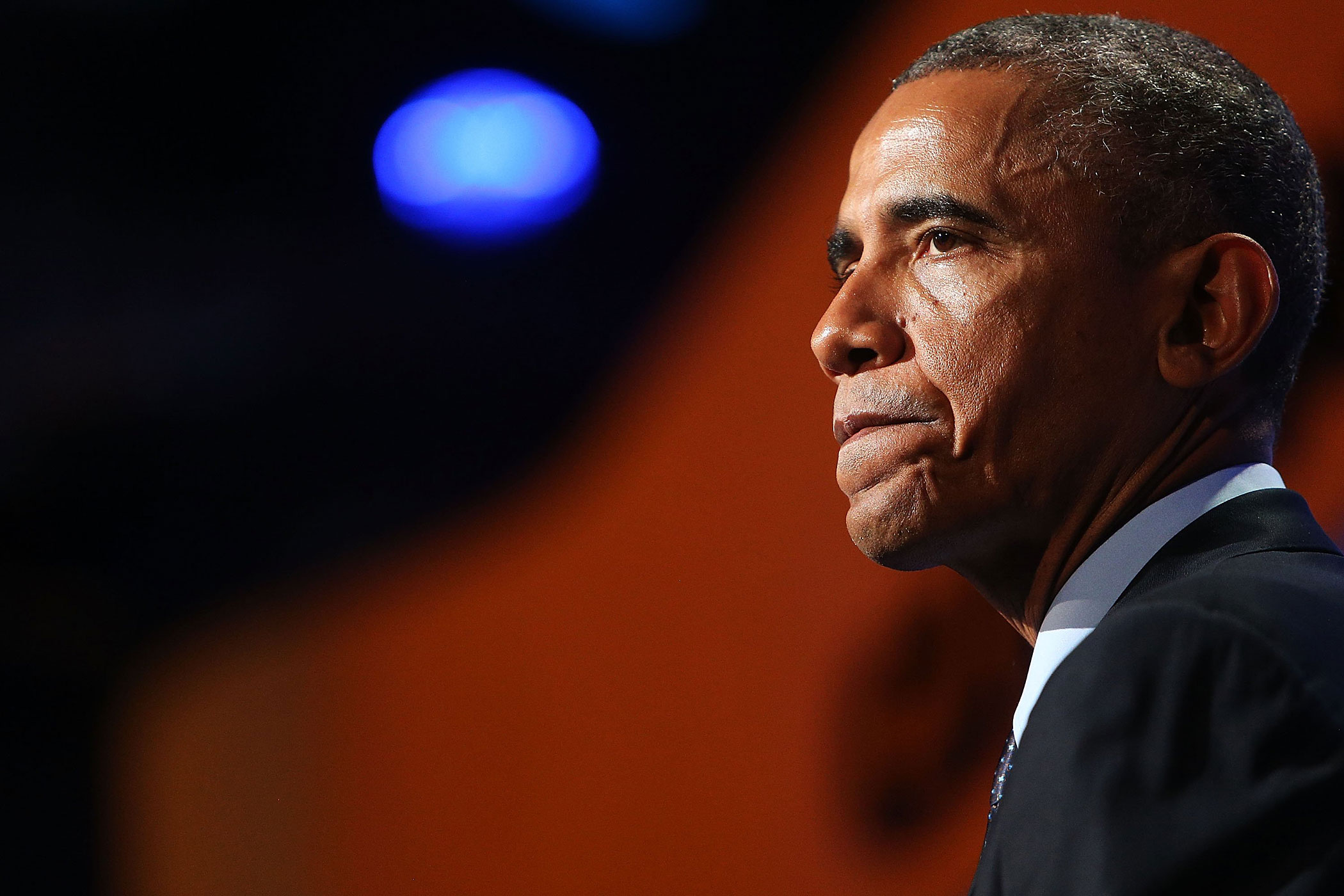
Barack Obama’s war against ISIS has come a long way from Sinjar Mountain.
It was six weeks ago, on Aug. 7, that the President announced his first airstrikes against the militant group Islamic State of Iraq and Greater Syria (ISIS). It was a profound decision for a President long determined to avoid military action in the Middle East—and for a war-scarred country resistant to foreign interventions.
It was also the first of many incremental steps towards Monday night’s dramatic strikes in Syria—a piecemeal approach that suggests an improvised mission, and one whose objectives and justifications have repeatedly shifted over the past six weeks.
From a podium in the White House’s state dining room on the night of Aug. 7, Obama gravely described his authorization of two military operations. One was to stop ISIS’s advance on the Iraqi city of Erbil, which Obama described as a threat to Americans stationed there. The other was to rescue thousands of Yezidi people besieged by ISIS fighters atop Sinjar Mountain. “[W]hen we have the unique capabilities to help avert a massacre, then I believe the United States of America cannot turn a blind eye,” Obama said. “We can act, carefully and responsibly, to prevent a potential act of genocide.”
The Yezidi rescue was the emotional core of Obama’s speech, and many listeners heard the humanitarian rationale as the real trigger for military action. In hindsight, it doesn’t look that way. For one thing, there were many fewer Yezidi on the mountain than believed, and just a few airstrikes broke their encirclement. Likewise, Erbil emerged quickly from danger as Kurdish fighters in the area regrouped.
Missions accomplished—or so it seemed. But the airstrikes continued. And soon a new mission emerged.
On a Sunday afternoon ten days later, the White House quietly issued a statement announcing air strikes with the goal of liberating the Mosul dam from the clutches of ISIS militants. The White House said the dam’s possible destruction threatened Americans stationed at the U.S. Embassy in Baghdad—some 250 miles away.
Even after the dam’s quick recapture by Iraqi government forces, strikes continued in the area. Then, on Sept. 7, came word of still another mission: A Pentagon statement said the U.S. was now bombing ISIS around the Haditha dam, in western Iraq—far from Erbil, Sinjar and Mosul. By now, American drones and planes had conducted about 150 strikes in the country. The U.S. was conducting a de facto air campaign against ISIS in support of Iraq’s government.
As fears about ISIS’s terrorist capabilities grew, and after the group beheaded two American captives, Obama spoke to the nation again on Sept. 10. After weeks of action with limited goals—protecting Americans in the region, averting genocide—the President now declared a bold new objective: “to degrade and ultimately destroy” ISIS, even if it meant striking across the Iraqi border into Syria.
Obama did just that Monday night. But even this latest version of the mission has already expanded beyond its originally stated objective. American strikes, aided by five Arab allies, targeted not only ISIS fighters in Syria but also militants with the al-Qaeda-affiliated group Khorasan, who the White House says was actively planning terror attacks against the U.S.
Speaking at the White House on Tuesday, Obama said he would “do what’s necessary to take the fight to this terrorist group.” Americans might be forgiven for wondering how much further his mission will expand. Last week, Obama insisted that U.S. troops in Iraq “do not and will not have a combat mission,” and that he would not mount “another ground war in Iraq.”
But the words “combat mission” may mean different things to different people. And while it’s impossible to imagine Obama sending 100,000 ground troops back to Iraq, many current and former Pentagon officials say that American soldiers could be sent into battle alongside Iraqi security forces as advisors and spotters for air strikes without violating the “combat mission” stricture.
And then there are plenty of other open questions. Could the war on ISIS expand to provide air cover for moderate Syrian rebels fighting the group? What if U.S.-trained rebels need help fending off Syrian regime forces? What happens if an American pilot goes down over ISIS-held territory?
“I will not allow the United States to be dragged into fighting another war in Iraq,” Obama told the nation on Aug. 7. But warfare has pulled hard at Obama ever since. And the record so far leaves little reason to think it’s finished with him.
More Must-Reads from TIME
- Cybersecurity Experts Are Sounding the Alarm on DOGE
- Meet the 2025 Women of the Year
- The Harsh Truth About Disability Inclusion
- Why Do More Young Adults Have Cancer?
- Colman Domingo Leads With Radical Love
- How to Get Better at Doing Things Alone
- Michelle Zauner Stares Down the Darkness
Contact us at letters@time.com